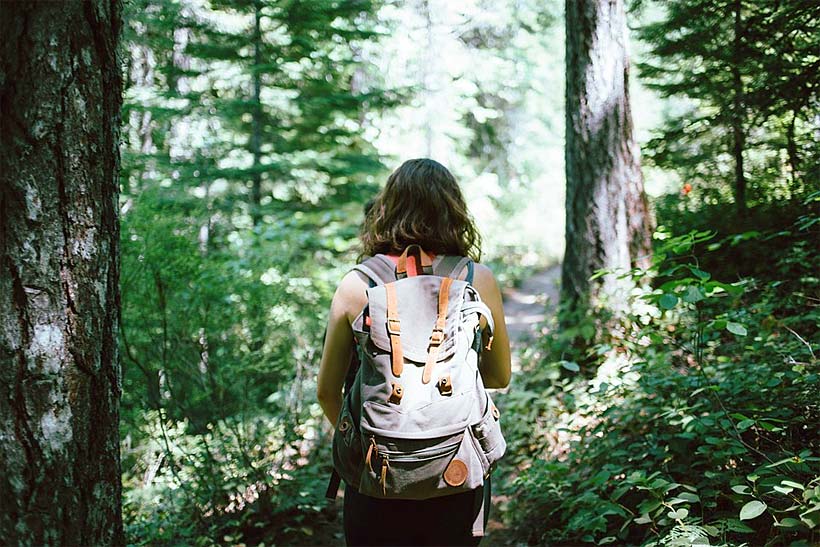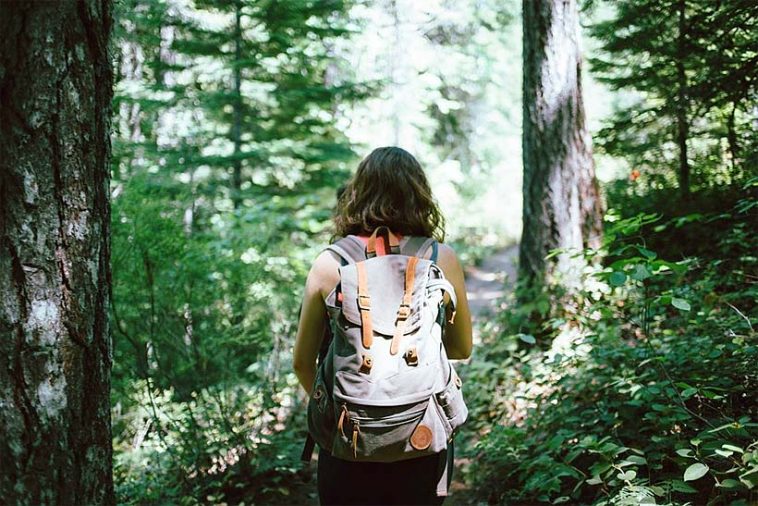- Like
- SHARE
- Digg
- Del
- Tumblr
- VKontakte
- Flattr
- Buffer
- Love This
- Save
- Odnoklassniki
- Meneame
- Blogger
- Amazon
- Yahoo Mail
- Gmail
- AOL
- Newsvine
- HackerNews
- Evernote
- MySpace
- Mail.ru
- Viadeo
- Line
- Comments
- Yummly
- SMS
- Viber
- Telegram
- JOIN
- Skype
- Facebook Messenger
- Kakao
- LiveJournal
- Yammer
- Edgar
- Fintel
- Mix
- Instapaper
- Copy Link
 Hiking is one of the best ways to explore nature and exercise your body. Hiking can include everything from short beginner’s hikes at city parks to multi-day excursions traversing mountains and gorges.
Hiking is one of the best ways to explore nature and exercise your body. Hiking can include everything from short beginner’s hikes at city parks to multi-day excursions traversing mountains and gorges.
Hikers should always be mindful of their personal safety as there are several factors that can put them at risk. The weather can throw several hazards at hikers including poor ground conditions, intense rain or sun, ruined paths, or extreme temperatures.
Hikers also need to be aware of dangerous animals which can include big cats like mountain lions to poisonous snakes. Lastly, hikers need to be vigilant of human predators as attacks on hikers have become more common.
In this article we’ll discuss the last threat to human safety while hiking; human predators and strategies you can employ to protect yourself from other people wanting to inflict harm.
Five Important Self-Defense Strategies to Use When Hiking
Here are five important self-defense strategies you can use to protect yourself from “human” predators when hiking. Even a little protection goes a long way if an unfortunate encounter ever comes your way.
#1. Involve Other People
Whether you’re hiking or jogging in the mountains, involve other people! Instead of a solo hike, invite your friends or family. There are many outdoor social networking groups that have organized hikes on platforms like MeetUp.com and Facebook.com. Hiking in groups makes you less of a target and you’ll meet some like-minded individuals for future hikes!
It’s also completely normal to want to solo hike every once in a while. Moving at your own pace, being alone with nature, and clearing your mind without any distractions is quite relaxing. If you decide to go on a solo hike, tell your friends and family about your trip. They should know your intended start and end times, your route, and any relevant information like if you plan on meeting someone or making any stops. Alerting people to your plans allows them to check in on you and alert authorities if they suspect anything unusual.
#2. Plan Your Hike
Most mountains have trail maps, estimated times and distances, and reviews or stories from previous hikers. Make sure to use all resources at your disposal to ensure that you understand every detail about your hike. Important details to note are:
- Start/end time
- Distance of hike
- Difficult or confusing sections of the hike
- Known hazards along hike
- Weather
- Safety/emergency numbers
Planning your hike is absolutely crucial to your personal safety. Print out trail maps ahead of time and highlight your intended path. Write an itinerary and make sure to share all of this information with your friends and family.
One advantage of human predators is targeting victims in unfamiliar environments where their victims feel especially vulnerable and isolated. If you plan your hike completely and know the ins and outs you will feel a lot more comfortable in your environment. In a self-defense situation you would be able to focus on escaping and fighting as opposed to where you were at the time.
#3. Bring Equipment
All hikers should carry basic equipment even if it’s a short beginner’s hike in an urban setting. At the very least you should bring a backpack or bag, first aid kit, water, bars/snacks/food, your phone, and most importantly a knife. You might not have to use the first aid kit or knife, but it’s always better to be safe than sorry.
Everyone should purchase a good knife, preferably a hunting knife with a holstered sheath. Knives can be purchased inexpensively for around $10-15. In addition to a hunting knife, women hiking alone should purchase products that function as both jewelry and weapons such as Defender Ring self-defense rings. These products can be armed faster than other weapons and can be worn as regular jewelry. Humans are great at doing many things but cutting or stabbing is not one of them. A knife will come in handy for general hiking purposes and if you need it for self-defense, it can be a formidable weapon. Similarly, you can carry pepper spray for defense against bears and mountain lions, and it can also be used against human predators.
#4. Stagger
When hiking in pairs or groups, it’s always best to walk in a staggered formation. A staggered formation is one where the individuals are not right next to each other and are at variable distances from each other.
Staggered hiking is important so that a solo attacker cannot subdue or attack two victims at the same time or easily. If two female hikers are walking with 8 feet between them, the attacker has to choose one hiker to target first which allows the other hiker to respond either by retrieving a weapon or fleeing and calling for help. If the two female hikers walk side by side, it’s much easier for one attacker to attack, disorient, and subdue both at the same time.
#5. Socialize
This last strategy can be useful but has to be applied appropriately. If you’re solo hiking and you pass other hikers along your journey it’s nice to socialize with them and can even end up saving your life. Humans are inherently social creatures. Meeting new people and getting to know someone is very eye opening and rewarding. At the same time, many people are shy and forcing an interaction might make them feel uncomfortable. If you plan to socialize with people on your hike, it’s important to be aware of how they feel and to end the conversation if they’re getting uncomfortable.
Socializing is a great self-defense strategy because you’re expanding your circle. You’re creating an association with them so that if you’re in trouble, they’ll be more inclined to help instead of worrying about their own self interests. If you go missing, they will be able to identify you and remember when and where they met you. If there’s an attacker nearby, he might see you walking with a group and think you’re together and choose a different victim. Other hikers you meet can also alert you to any suspicious activity or circumstances along the path.
If you’re a friendly person and engage other hikers in brief conversation, most hikers will gladly chat with you for a bit especially if they see you are a solo female hiker.
The Bottom Line
Employing the strategies above will put you in a much safer position if you decide to hike alone. Besides the practical aspects of our strategies, simply knowing you were prepared will give you more confidence and peace of mind. We hope that you read and internalize the strategies we’ve listed above so you can feel safer on your next hike!

